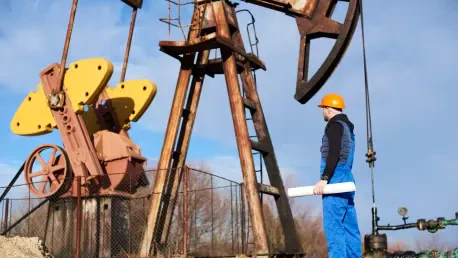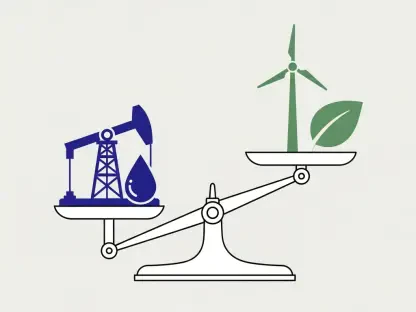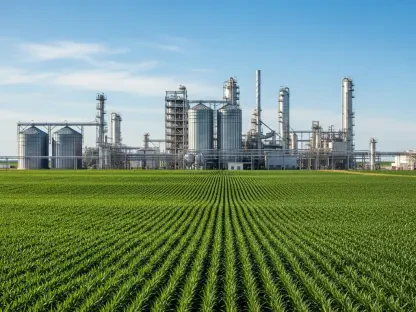What does a single number—539—reveal about the heartbeat of America’s energy sector? It’s not just a tally of oil and gas rigs; it’s a snapshot of an industry navigating volatile markets, shifting priorities, and the push for sustainability. As of this week in 2025, Baker Hughes reports that the U.S. rig count stands unchanged at 539, a figure that seems mundane at first glance but signals deeper currents in a landscape critical to fuel prices, jobs, and national economic health. This stability invites a closer look at what’s driving the energy sector today and what lies ahead.
The Significance of a Steady Rig Count
Beyond the raw data, the rig count serves as a vital indicator of future oil and gas production in the United States, the world’s leading producer of both resources. A consistent number like 539 suggests a cautious balance among energy companies, reflecting responses to market dynamics, geopolitical tensions, and domestic economic pressures. This weekly metric, tracked meticulously by Baker Hughes, offers a window into how the industry is positioning itself amid fluctuating demand and evolving energy policies, making it a key focus for analysts and stakeholders alike.
Understanding this number’s weight becomes even clearer when considering its ripple effects. From influencing gasoline prices at the pump to shaping employment in drilling-heavy states like Texas, the rig count ties directly to everyday life. As companies weigh whether to drill more or hold back, their decisions—mirrored in this steady count—hint at broader strategies that could redefine energy security and consumer costs in the coming months.
Unpacking the Numbers: A Closer Look at Regional Trends
Drilling down into the specifics, the overall count of 539 rigs masks subtle shifts in activity. Oil rigs ticked up by one to 412, while gas rigs slipped by one to 122, showing a near-equilibrium at the national level. Yet, regional variations tell a more nuanced story: Texas, the epicenter of U.S. production, saw its rig count drop to 242, the lowest in over three years. Similarly, the Permian Basin, a shale oil giant spanning West Texas and eastern New Mexico, fell by one to 255, matching a multi-year low, while Wyoming’s count dipped to 13, reflecting hesitancy in smaller markets.
These localized declines point to a selective pullback, even as the national figure holds firm. Over the past year, a 5% drop in rig counts signals a broader trend of restraint, driven by softer oil and gas prices and a strategic pivot among firms. This cautious approach in key regions underscores how energy companies are prioritizing efficiency over expansion, a shift that could reshape production patterns if sustained.
Voices from the Field: Industry Insights
Energy experts shed light on what’s behind these numbers, painting a picture of an industry at a crossroads. According to financial analysts at TD Cowen, independent exploration and production companies are planning a 4% cut in capital spending for the coming year, a stark contrast to the flat budgets of 2025. This move away from aggressive investment—seen in double-digit spending hikes just a few years ago—highlights a focus on returning value to shareholders and trimming debt, rather than chasing growth through new rigs.
On the flip side, projections from the U.S. Energy Information Administration (EIA) offer a glimmer of optimism. Crude oil output is expected to edge up from 13.2 million barrels per day (bpd) to 13.4 million bpd over the next year, while natural gas production could climb from 103.2 billion cubic feet per day (bcfd) to 106.4 bcfd, fueled by a projected 65% surge in spot gas prices. “The industry is threading a needle—balancing fiscal restraint with market opportunities,” noted an EIA spokesperson, capturing the tension between caution and potential in today’s energy sector.
Market Dynamics: Balancing Act in Oil and Gas
The interplay between rig counts and market conditions reveals a sector adapting to complex forces. Lower oil and gas prices over recent years have pushed companies toward financial discipline, evident in reduced drilling activity and planned spending cuts. Yet, the anticipated rise in gas prices offers a counterweight, potentially spurring renewed activity in gas-focused regions—a response not unlike the industry’s rebound after price slumps in earlier downturns, such as the demand drop during the COVID-19 era.
This dynamic also reflects advancements in technology, allowing firms to extract more from fewer rigs. In the Permian Basin, for instance, production has held strong despite fewer active rigs, thanks to improved drilling techniques and better well designs. Such efficiency gains suggest that output growth doesn’t always require more hardware in the ground, a trend that could redefine how the industry measures success in a price-sensitive market.
Strategies for Navigating an Uncertain Landscape
For energy stakeholders—be they companies, investors, or policymakers—the current rig count and market forecasts provide clear guideposts. Embracing technological innovation stands out as a priority; with production rising despite fewer rigs, investing in efficiency tools can maximize returns without overextending resources. Additionally, keeping a close eye on gas price trends is crucial, as the expected recovery could justify targeted drilling in gas-rich areas, reversing some of the cuts seen recently.
Equally important is maintaining a disciplined financial approach. While growth in output is on the horizon, the planned spending reductions signal that overexpansion remains a risk in a volatile market. Aligning strategies with these signals—whether through smart investments or policy support for innovation—will be essential for thriving in an energy landscape that demands both agility and foresight.
Reflecting on a Pivotal Moment
Looking back, the steady rig count of 539 reported in that pivotal week of 2025 captured an industry in transition, balancing regional declines with national stability. The cautious steps taken in Texas and the Permian Basin, alongside broader trends of reduced drilling, painted a picture of restraint amid market uncertainties. Yet, the projected uptick in oil and gas output hinted at resilience, driven by efficiency and a sharp eye on price recovery.
Moving forward, the challenge became clear: adapt to evolving conditions with smarter tools and tighter budgets. Energy firms needed to harness technology to boost output without overcommitting, while policymakers had to consider how to support a sector critical to economic stability. As the industry stood at that crossroads, the next steps—whether ramping up gas production or refining operational focus—promised to shape the energy future for years to come.









